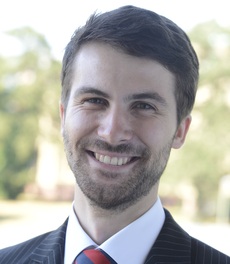Research Area Simulation - S4:PFMSolidification
Phase-field modeling of thermo-mechanical properties in multiphase solidification microstructures
Advisors: Nestler (IAM-ZBS), Denniston (UWO)
Fibre-reinforced polymers, much like other materials, are exposed to production induced eigenstrains/-stresses and micro crack formation. Their influence on the material behaviour and service life must commonly be considered. To obtain a more profound understanding about how eigenstrains/-stresses and cracks are induced, this project mainly focuses on the solidification and curing process of glass and carbon fibre-reinforced thermosets.
Solidification and curing will be simulated and mapped via the phase-field method to take phase transitions into account. Operating on a mesoscopic length scale, the overall approach allows distinguishing between the phases (fibres and matrix) and modelling them, and their properties, explicitly. Hence, the first steps of the project are to implement continuum mechanical models for the fibres and the matrix (e.g., viscoelastoplasticity) and to map the solidification process by coupling the mechanical and thermal solvers. Once this is achieved, the curing process will be modelled and a simple damage/crack formalism is planned as a last step for simulations.
Based on a well-chosen representative volume element, every step in the development of the model is followed by a validation and evaluation to ensure conclusive findings. In a final step, the formation of eigenstrains/-stresses and cracks due to production influences is studied, including parameters as fibre volume fractions, fibre orientation, fibre position, fibre length, and temperature. To address the initial issue and to complete the topic, the results of the studies will be used to derive correlation functions to predict solidification and curing induced eigenstrains.
Fig. 1: Research on the micro- and nano-scale: Thermoset curing simulations on basis of a phase-field method to predict eigenstresses and micro-cracks, supported by molecular dynamics simulations of the chemical reactions to calculate cure and temperature dependent material properties.

